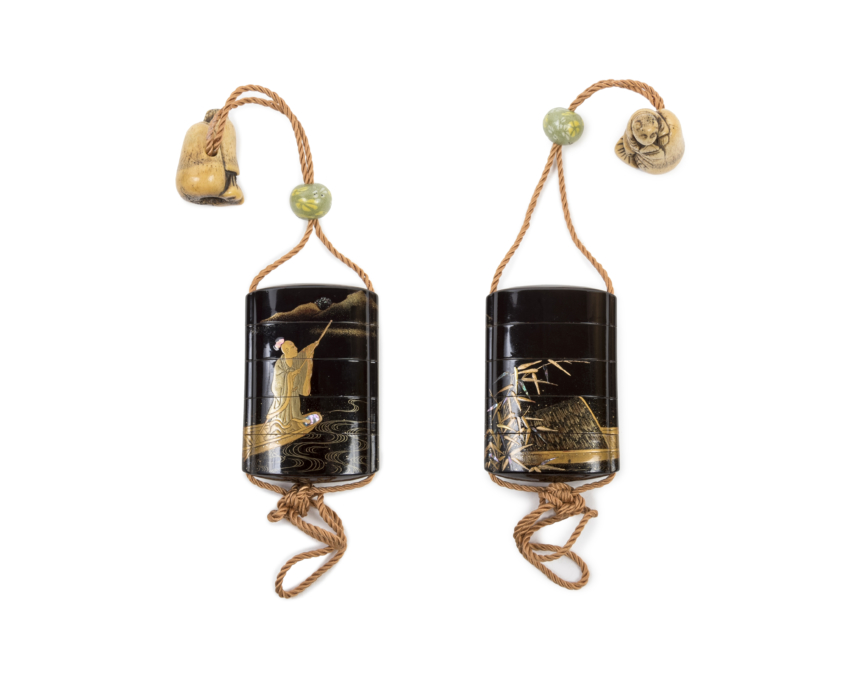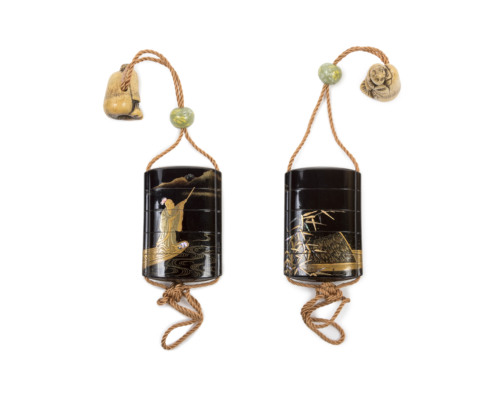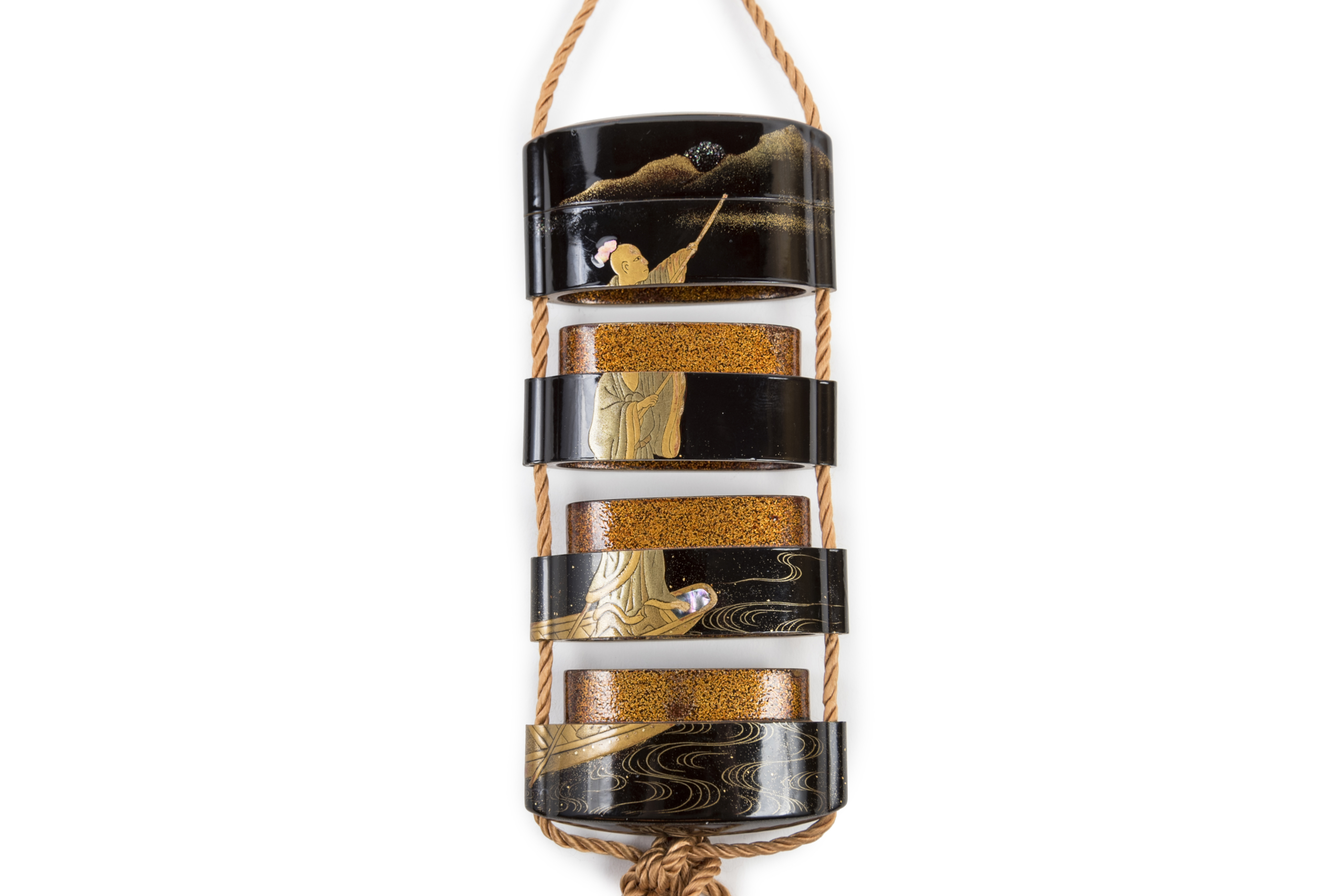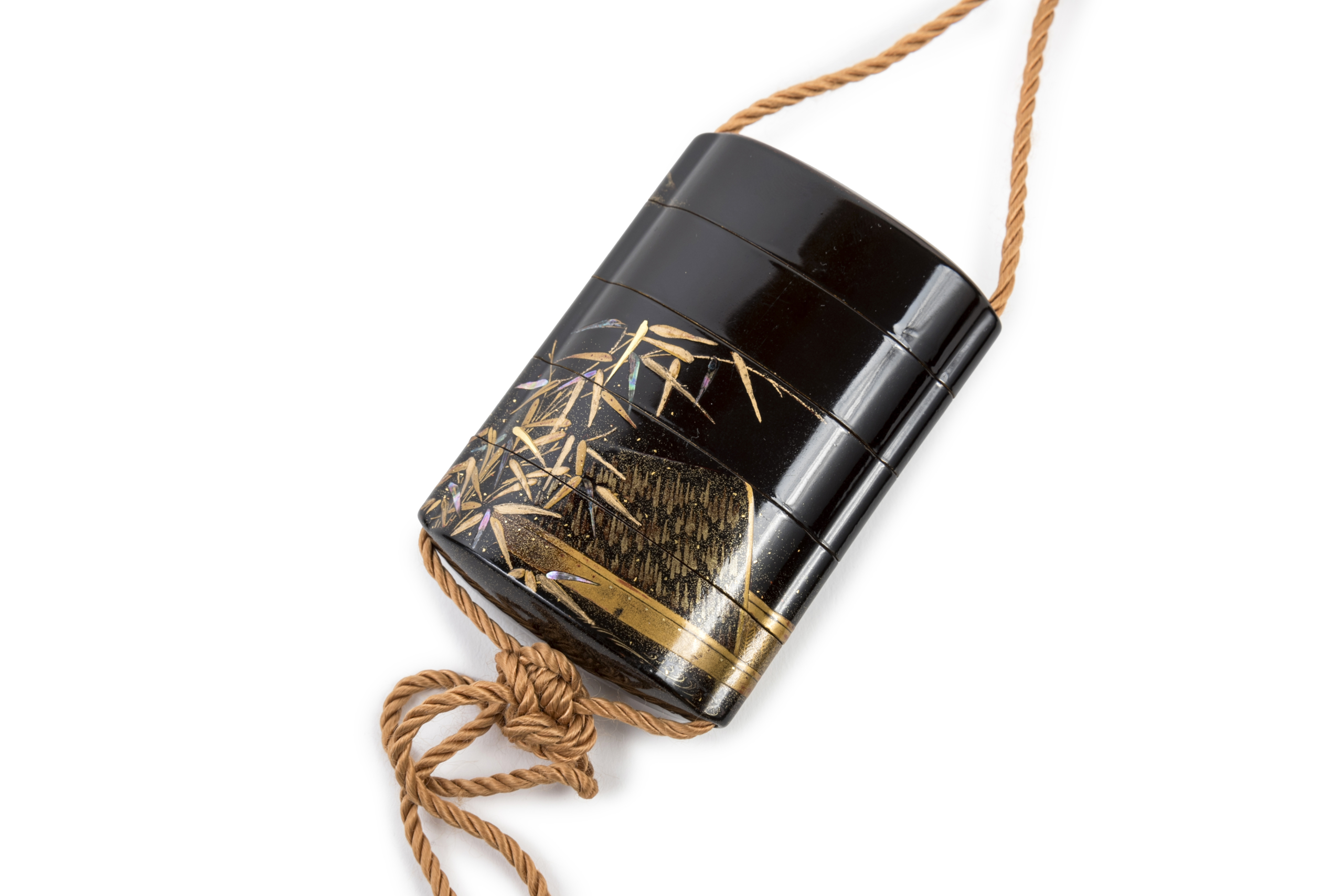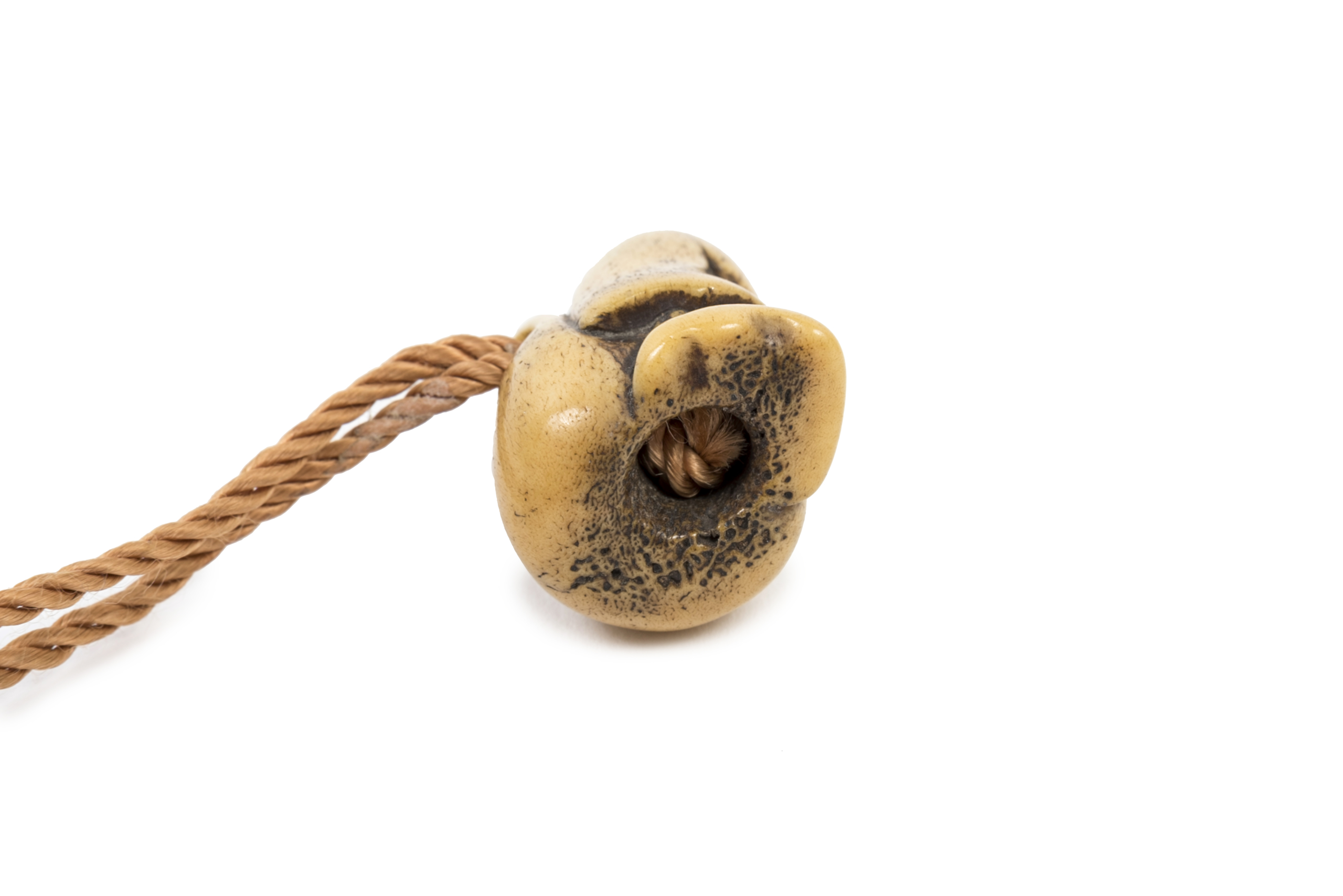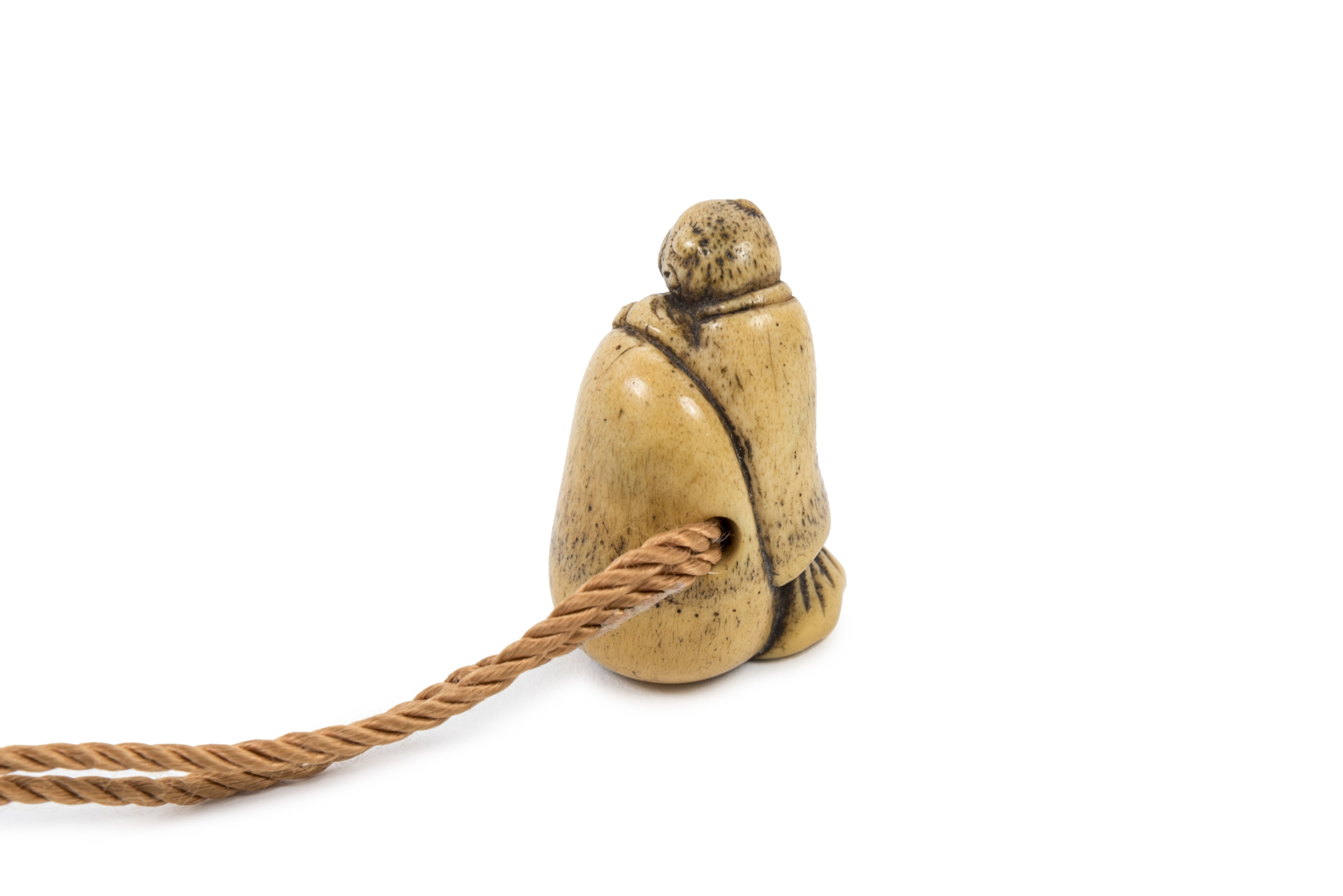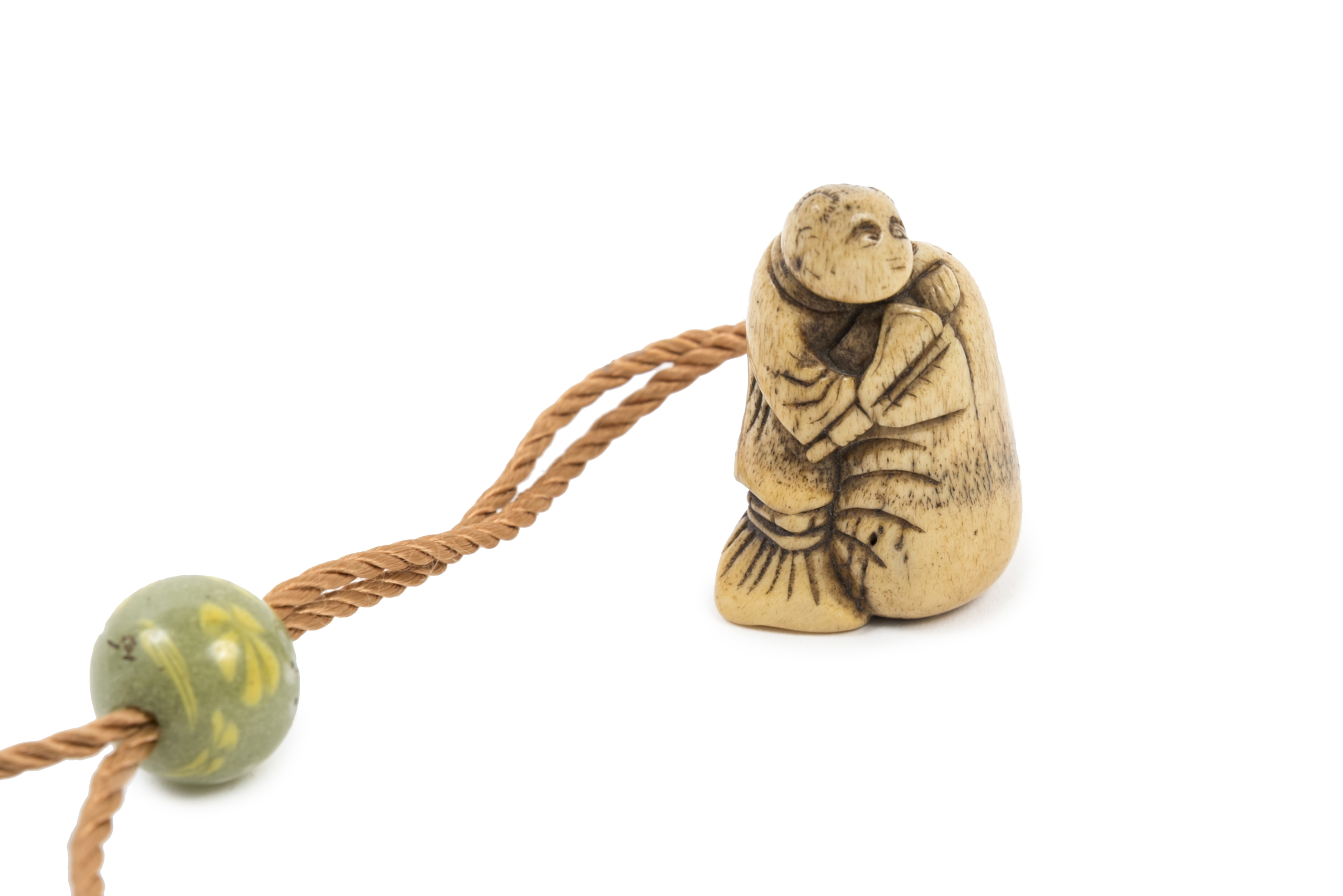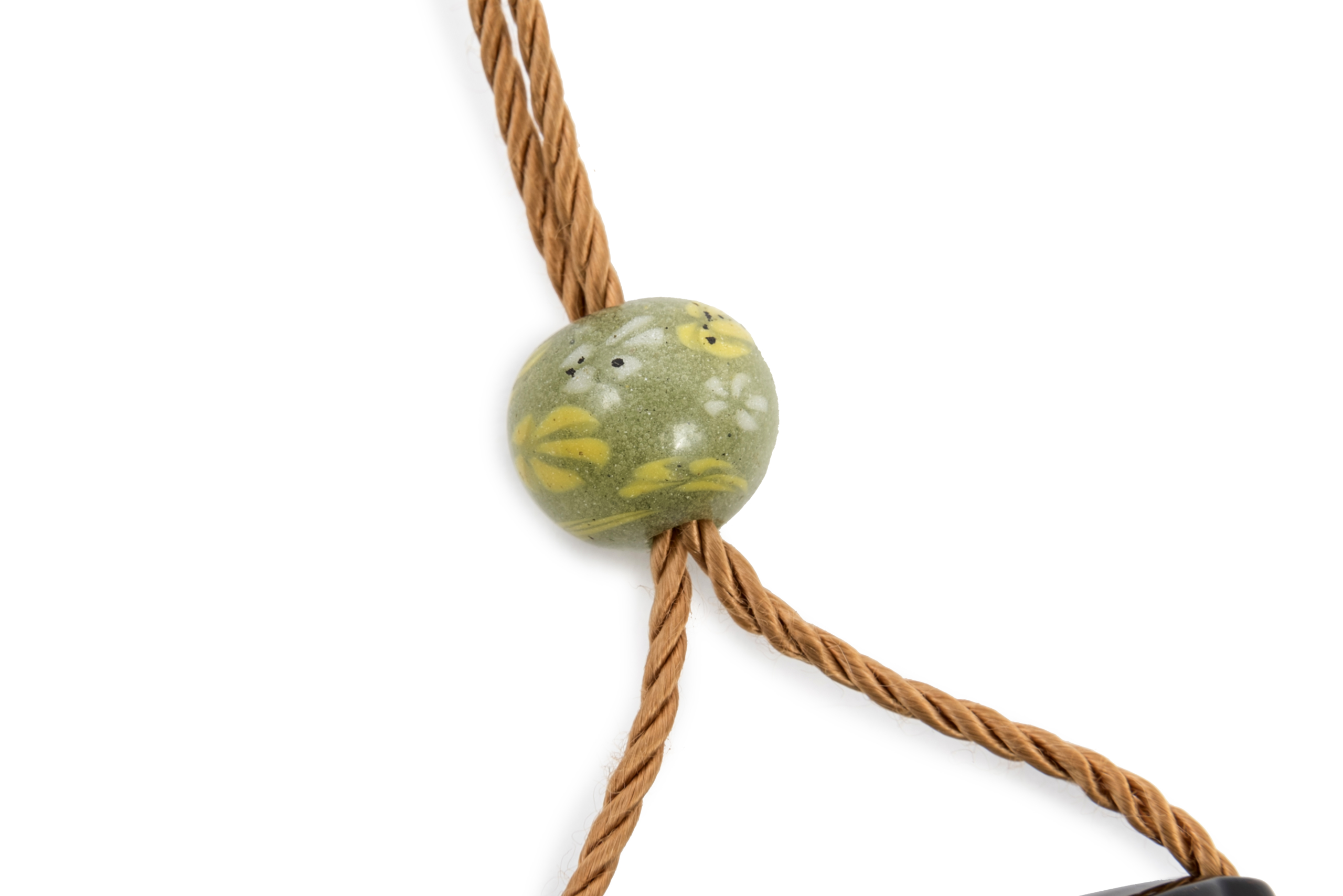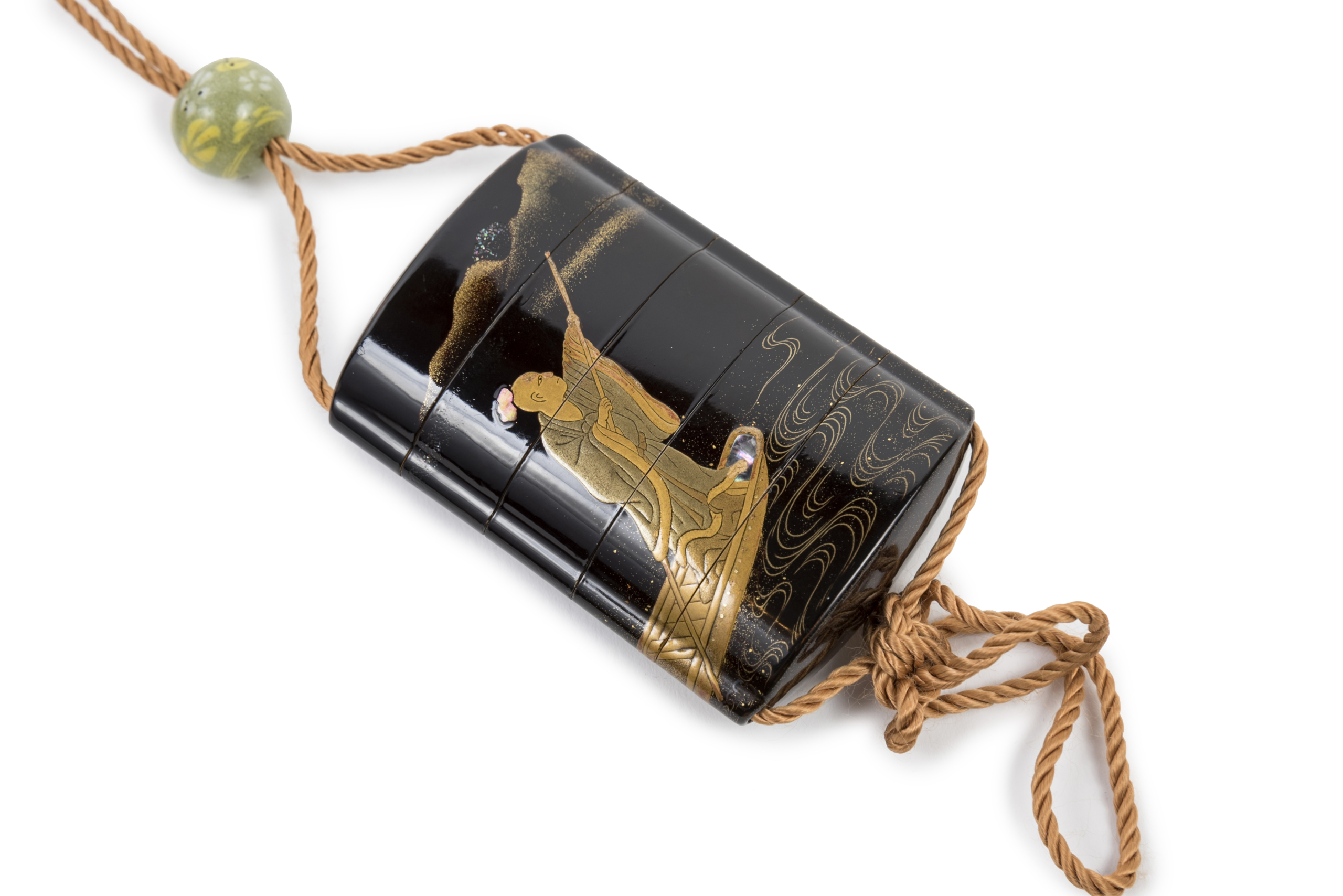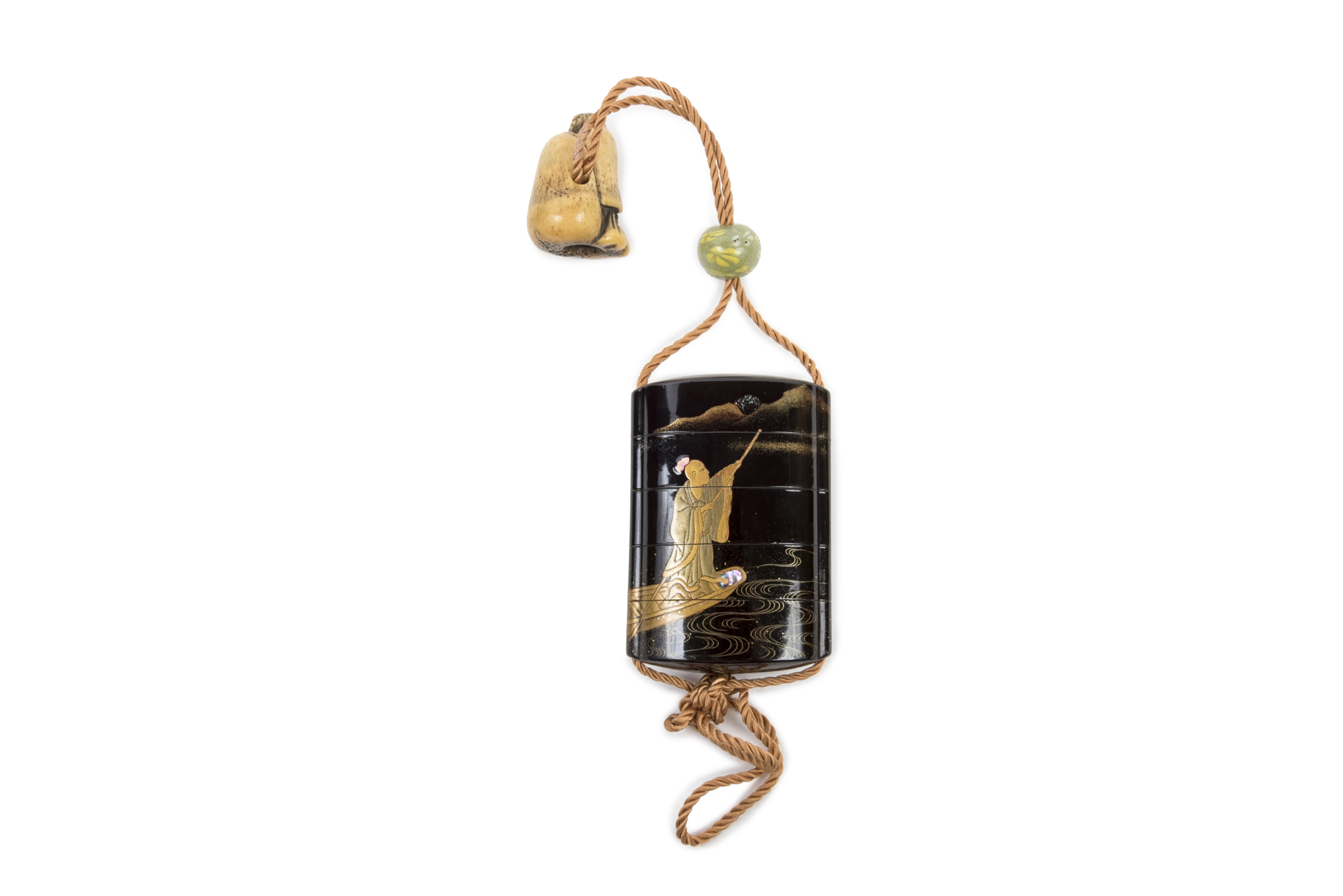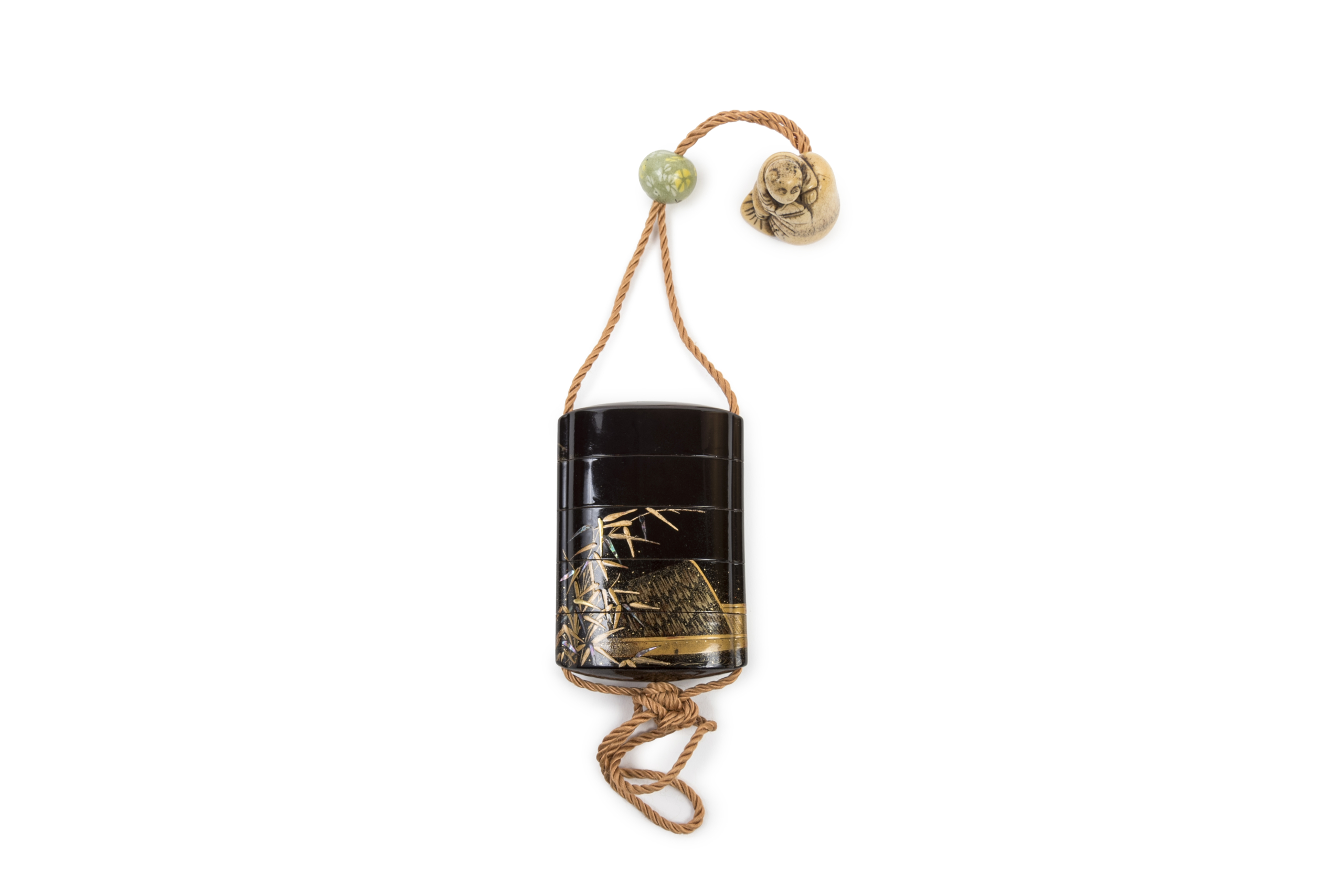INRÔ MAN ON A BOAT
Reference: 2022-1016
Four-square inrô in hiramaki-e lacquer, maki-bokashii and mother-of-pearl inlay (raden) in the form of a man sailing on a boat, against a mountain background. On the back side, bamboos are in the foreground.
Horn netsuke of a man resting against a stone, a fan in his right hand.
Ojime in stone painted with white carnations.
Sold in a box which is not original.
Small boxes formed of interlocking compartments, inrō (印籠) are traditional Japanese clothing items. Since the kimono had no pockets, everyday objects were carried in small boxes (sagemono) hanging from the belt. To prevent them from slipping, a netsuke, a small wooden or ivory figurine, was used to hold the cord of inrō or other types of sagemono passed around the belt (obi). Inrō are often adorned with harmonious decorations and scenes inspired by flora and fauna. Japanese artists play with materials and shapes with a precision and meticulousness comparable to goldsmithing.
Japan – Edo Era (1603-1868)
Inrô: height 3.1 in. (7.8 cm) – width 2.13 in. (5.4 cm) – depth 0.87 in. (2.2 cm)
Netsuke: height 1.93 in. (4.9 cm) – width 1.19 in. (3 cm) – depth 1 in. (2.5 cm)




